
Consider the pine tree growing outside your window. The squirrel scurrying across your roof. The mushrooms growing through the cracks on your porch. Everywhere you look, there is life.
Did you know that there are over 1.8 million species calling our planet home? Or that another 59,000 now-extinct species dwell in the fossil record beneath our feet?1 Most scientists believe that all of these lifeforms can trace their ancestry back billions of years to LUCA, one or more small, single-celled organisms considered the Last Universal Common Ancestor(s) of us all.
But the Bible gives us a completely different view on the origin of biodiversity. The first chapter of Genesis records that God supernaturally created a diverse array of lifeforms in the beginning. Many kinds of plants and animals―of land, air, and water―already existed within the first week. How do the classification schemes we use today correspond to these ‘created kinds’ of animals and plants? Is every species we see today the same as when God created them? If not, how many of today’s species can we trace back to the original kinds? How much change could have occurred since the creation event?
We can try to answer these questions with a relatively new field of scientific research. Let us introduce you to baraminology, the study of created kinds.
Have Species Changed Since Creation?
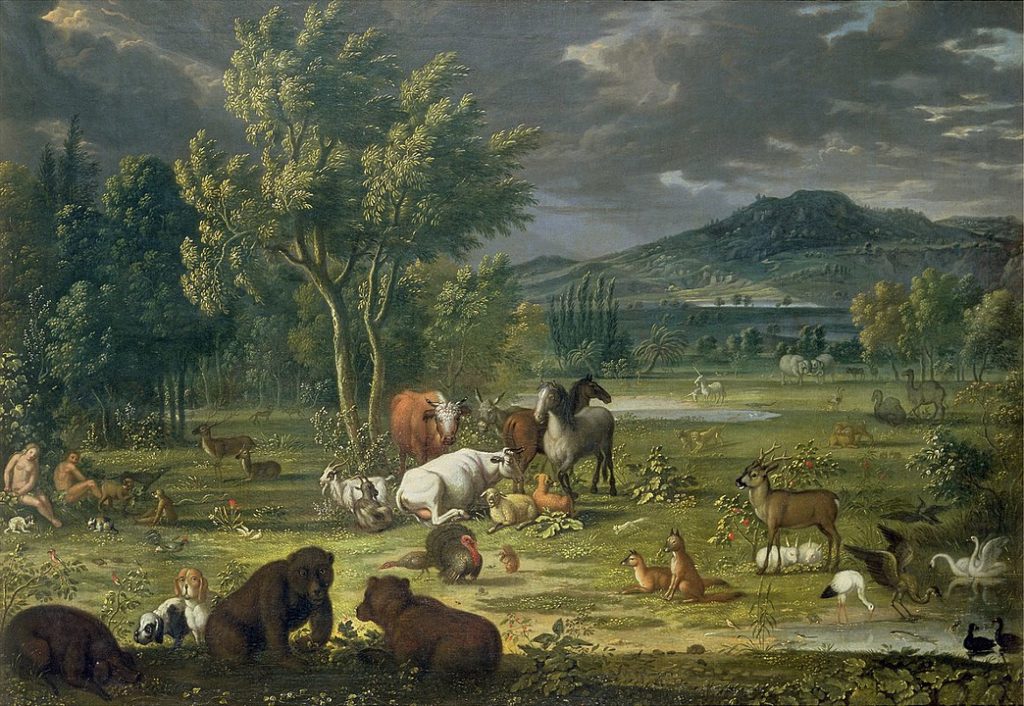
Many associate young-earth creationism with the concept of fixity of species. This concept assumes that all living species exist in the same form today as when God spoke them into existence. This belief suggests no species has changed one iota since the dawn of time. Example: portrayals of the Garden might depict Adam and Eve alongside your typical farm chickens, turkeys, cattle, and dog breeds, instead of their wild ancestors which we domesticated. But this notion doesn’t fit what we know from reality. Species have changed quite a bit, even in more recent times!
But you want to hear something really crazy? The fixity of species concept doesn’t actually come from the Bible. We can trace it back to ancient Greek philosophers, like Aristotle and Plato.2 They believed that every species existed in an ideal form and could not change its essence. It is not until much later that people, like John Ray3 and others, began to adapt this belief into the biblical text. In fact, the word ‘species’ doesn’t appear anywhere in the original Hebrew text of the Bible. This is because the most widely-used definition of a species nowadays didn’t even exist until the 20th century!4 Instead, when the Bible refers to the major units according to which God created living things, it uses the word Hebrew min, or “kind.”
What is a Min?
Seeing as the Book of Genesis is a historical account and not a biology textbook, it uses the word min very few times.5 This makes it a very difficult term to define. Nevertheless, we can examine the textual context whenever the word appears in Scripture to help us better understand what it means.
Over the years, researchers have developed a number of proposed definitions.6,7,8 Despite differences in opinion, they all unite on the same basic idea. This is that the kind represents an organism’s lineage that was originally created by God and diversified into many diverse forms with the passage of time.

The Archipelago of Life
We can picture the diversity of life as thousands of islands scattered across a vast ocean (e.g. a grand archipelago). Each island of diversity represents a min―a recognizable group of organisms we call a biblical ‘kind.’ The group persists by its members interbreeding and producing similar offspring.
Islands of Biodiversity
Consider, for example, the diversity we see just within the various dog breeds around the world. Retrievers, beagles, poodles, and chihuahuas are just a few of the 450 breeds of dogs recognized worldwide.9 Add to that their wild ancestor, the wolf, and its cousins, like the coyote, the red fox, and the now-extinct dire wolf. These dog-like creatures belong to the family Canidae. All of them likely make up a single created kind: the dog kind.10
Seaways of Discontinuity
Separating these “islands” of diversity are vast seaways that represent significant dissimilarity; these can be used to distinguish one major group of organisms (a “kind”) apart from the others. The “seaways of discontinuity” that separate them are perilous and cannot be crossed. Presumably, organisms from one min cannot interbreed with and were not ancestral to the members of any other min. They are distinct unto themselves.
Let’s return to our dog kind example. Terriers, fennec foxes, huskies, and bone-crushing dogs all share a common ancestor that was created by God. They are distinct from members of the cat family (Felidae), like leopards, lions, house cats, and saber-toothed cats.11 Our feline friends probably belong to a completely different min. In a similar fashion, chickens, turkeys, pheasants, and quail are thought to represent their own min.12 Meanwhile hawksbill, olive ridley, loggerhead, and green sea turtles are united within a completely different min.13
How Do Biblical ‘Kinds’ Compare to Our Modern Classification Ranks?
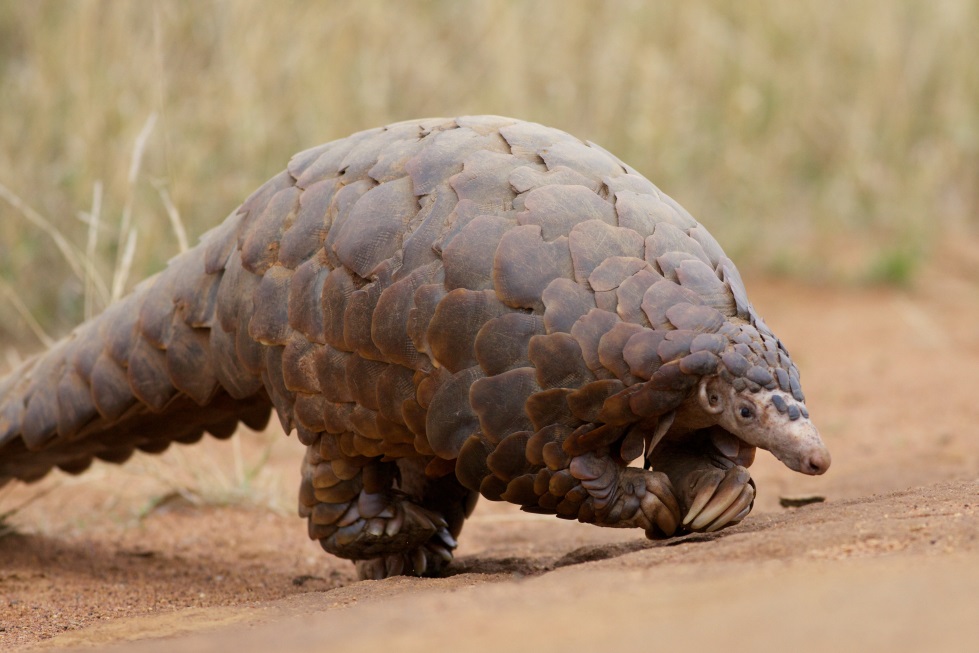
It may be tempting to assign biblical kinds to one of the tiers in our manmade classification system, such as genus, family, or order. This creates problems, however, because these categories are somewhat arbitrary and inconsistent with the amount of biodiversity they contain. For example, the order Carnivora contains all species of cats, dogs, bears, seals, and many other animals. On the other hand, the entire order Pholidota only contains eight similar-looking species of pangolins.
An eventual goal of baraminology will be to match lifeforms from the manmade classification system biologists have developed to distinct biblical kinds. Before we can do this with certainty, however, we must do more research. Until then, creationists refer to suspected biblical kinds as baramins, Hebrew for ‘created kinds’.
So What is Baraminology?
Baraminology is the study of created kinds. Biologists and theologians, such as Carl Linnaeus and Dr. Frank Marsh, have dipped their toes into this field for centuries. However, baraminology did not begin in earnest until the 1990’s, based on landmark work by Dr. Walter ReMine14 and Dr. Kurt Wise.15
Baraminologists carefully study how similar or dissimilar organisms are to each other. This allows them to best approximate which organisms belong to a single created kind.
How Do We Tell One Created Kind Apart from the Others?
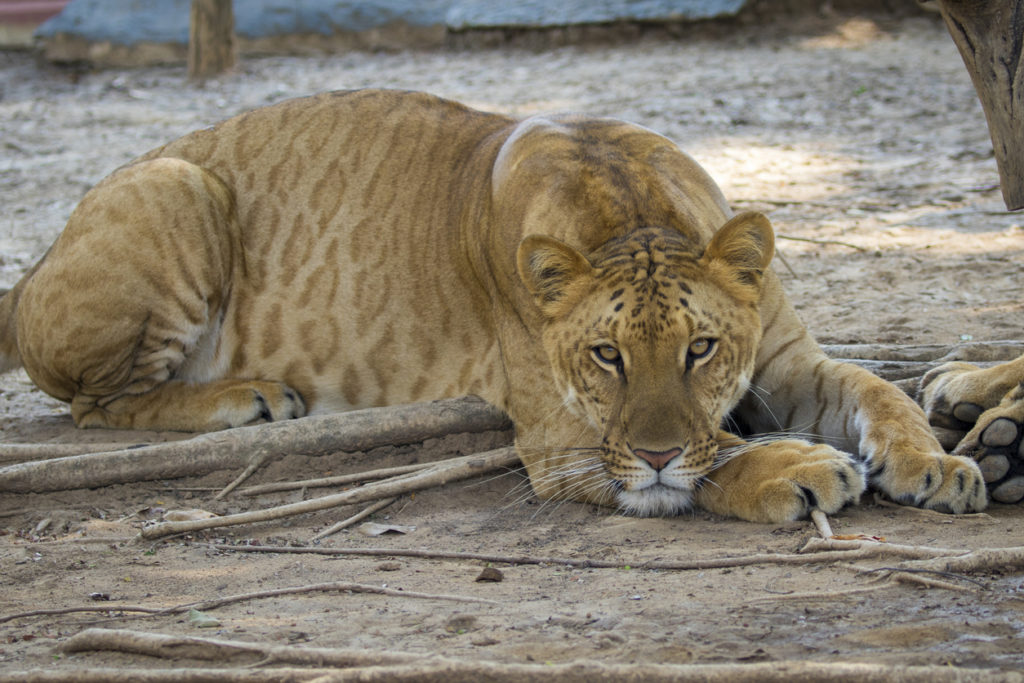
Baraminologists use a set of similarities, called additive criteria, to add or lump smaller groups of organisms together. For example, the ability of two organisms to produce offspring is a good sign that they belong to the same created kind. When lions and tigers mate, they can produce a hybrid called a liger. This makes sense, because lions and tigers both belong to the cat kind.
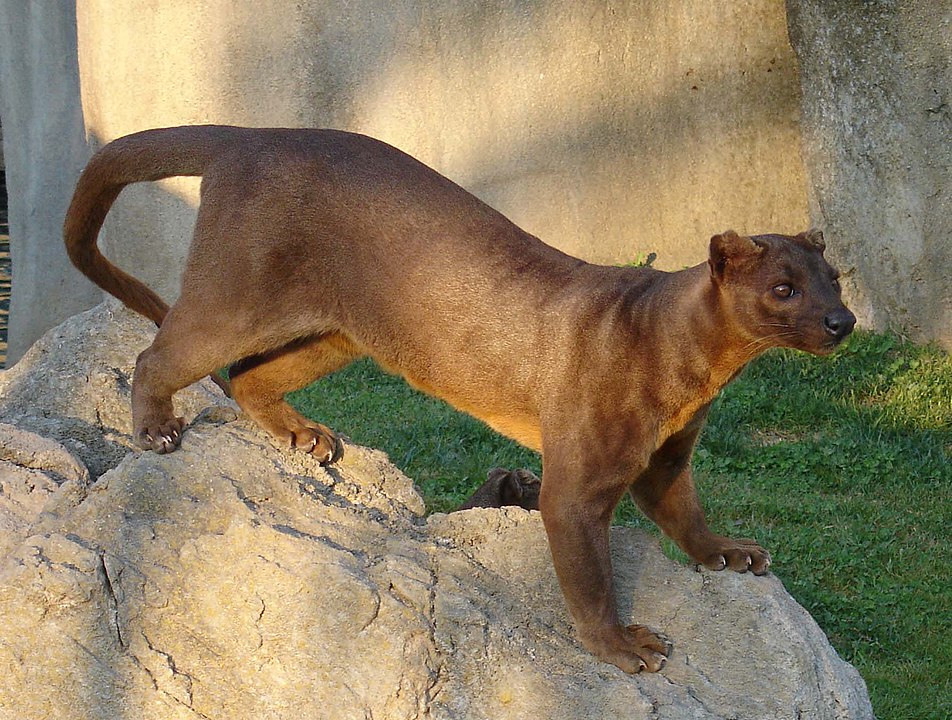
Baraminologists must also be able show how one proposed created kind is distinct from other created kinds. To do this, they look at dissimilarities, or subtractive criteria. These are used to subtract species from a larger group of organisms. This makes the group smaller and hopefully closer to the true created kind. Consider, as an example, the fossa. If you came across this mammal in the wild or at the zoo, you might easily mistake it for a cousin of your feline friend. Like your house cat, the fossa even has partially retractable claws to help it climb trees. Despite this, there are many features that show dissimilarity with true cats. Statistical tests can be done that show it likely does not belong to the cat created kind.16
What “Problems” For Young-Earth Creationism Does Baraminology Solve?
It Is an Argument Against LUCA, the Last Universal Common Ancestor
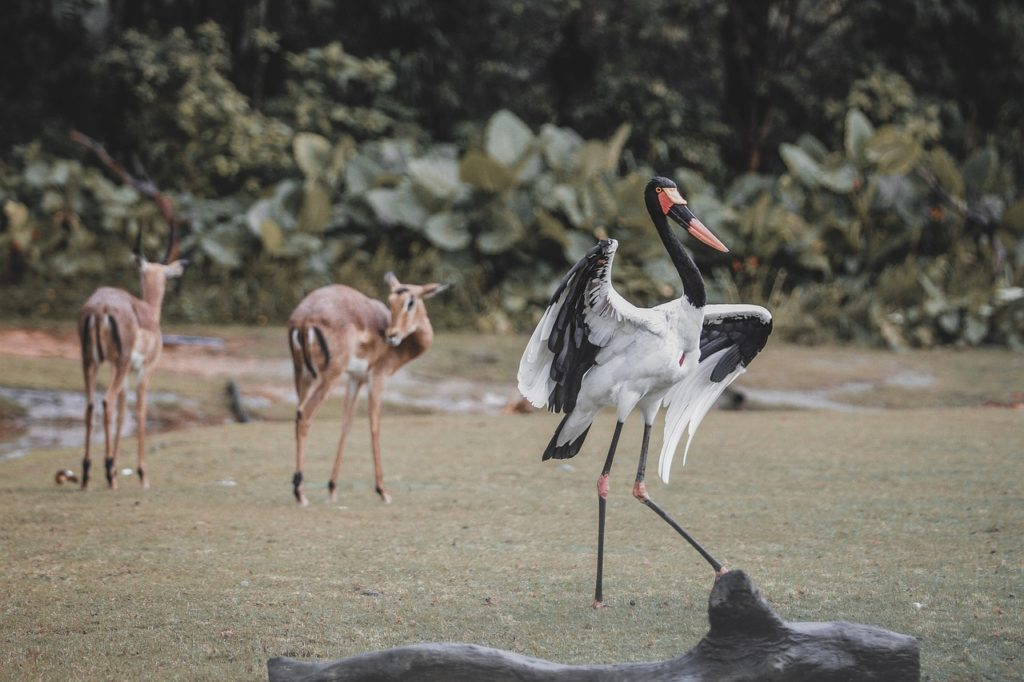
One of the chief differences between creation biology and evolutionary biology is that of ancestry. Conventional biologists believe that all life evolved from a universal common ancestor (LUCA, mentioned above) over the course of millions and billions of years. If that is the case, we would expect a gradient of similarity that unites all biodiversity to a single family tree called the Tree of Life. Baraminology allows us to demonstrate that the gaps of dissimilarity between major groups of organisms are real, and not apparent. This is a strong indication that life arose from a diverse array of ancestors, as recorded in the Biblical account.
It Reduces the Number of Animals Needed on Noah’s Ark

A very common objection raised against young-earth creationism concerns Noah’s Ark. Specifically, Noah could not have possibly fit two of every animal species on the Ark. This would, of course, be correct. But this is not what Noah was told to do in the first place! Rather, God told Noah that He would bring at least two of every kind of air-breathing land animal to the Ark (Genesis 6:19-20). This considerably reduces the required number of animals needed on board. It is the diverse descendants of these ‘Ark kinds’ that inhabit the world with us today.
We can only get a better idea of the number of animals present on the Ark after much more research is done. We may, however, use the classification rank of family to get a rough estimate. With that, we see there would have been less than 2,000 Ark kinds, and probably less than 7,000 individual animals total.17 The varieties of these kinds seen today (and in the post-Flood fossil record) are the result of diversification in the years following the Flood of Noah’s day.
It Explains the Existence of Some “Evidence” for Evolution
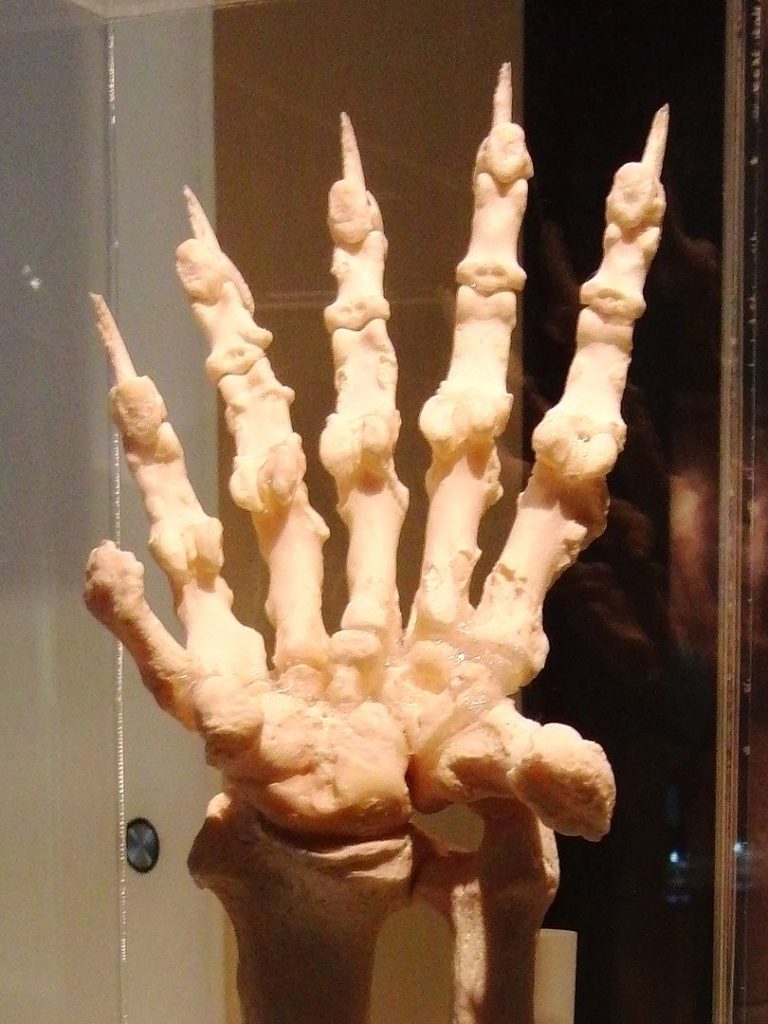
Anticreationist literature is filled to the brim with supposed proof that creationism is not true because animals have “evolved.” This evidence includes vestigial structures (i.e. whale hip bones), intermediate forms (i.e. “missing links”), and poorly-designed features (i.e. the panda’s thumb).
While baraminology doesn’t completely render this argument void, it does show that many “slam dunk” cases against young-earth creationism are actually great examples of variation within a created kind.
Consider the panda’s thumb as one example. Though it appears that the giant panda’s paw has six digits, that extra “thumb” is actually an extension of its wrist bone. The hungry panda uses it like a thumb though, clamping onto bamboo shoots as it eats. Young-earth skeptics claim that if an intelligent Creator had designed the panda, He would have given it a true thumb rather than modify its wrist bone to accommodate.
However, baraminology shows us that God likely did not create the giant panda in its present form. This beautiful creature is but a member of the bear kind. Since other bears do not have a “panda’s thumb” of their own, it is likely that the original, ancestral bear God created did not either. Instead, the giant panda developed this trait specifically for eating bamboo, probably sometime after the Flood.
It Explains Some Biogeography Puzzles
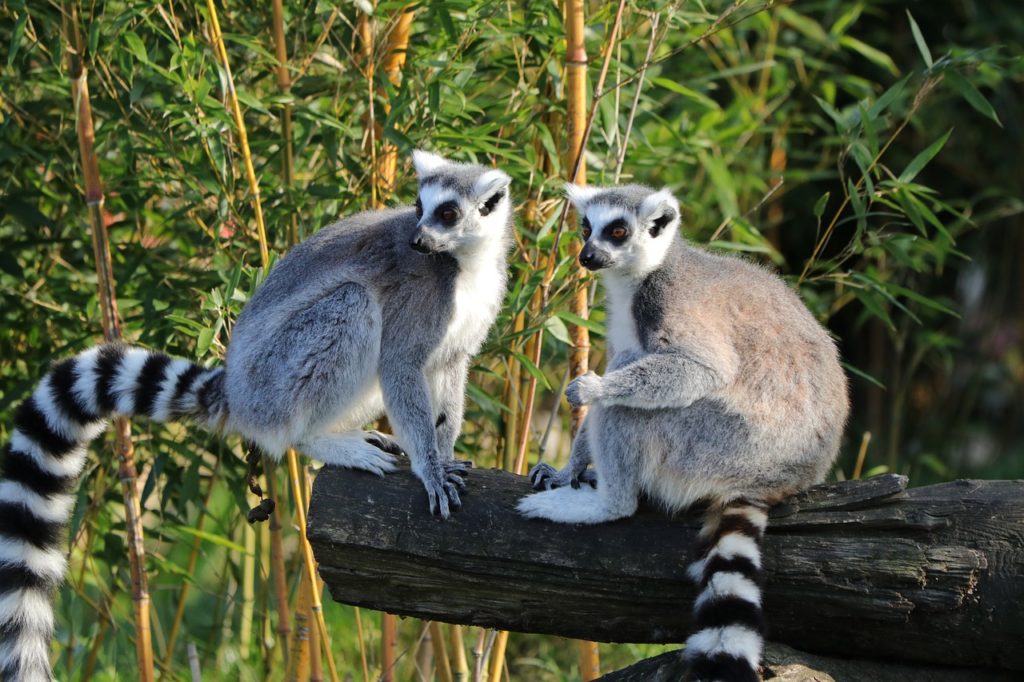
Biogeography is the study of where species live and how they came to be there. Very few species have worldwide distribution, as they are usually refined to a limited habitat requirements or geographic barriers (e.g. mountains or oceans). For example, lemurs are only found on the island of Madagascar. Biogeography is commonly used as an argument against young-earth creationism; skeptics think it unlikely that every lemur species would just so happen to migrate to Madagascar after the Flood. And they would be absolutely correct!
Baraminology helps restrict the severity of this argument. If lemurs belong to just one or a handful of created kinds, it’s perfectly logical they are only found in a single place on earth. That is where post-Flood lemur ancestors arrived after the Flood and is therefore the only place they diversified.
It Helps Us Account For Attack/Defense Structures, Parasites, and Poisonous Creatures
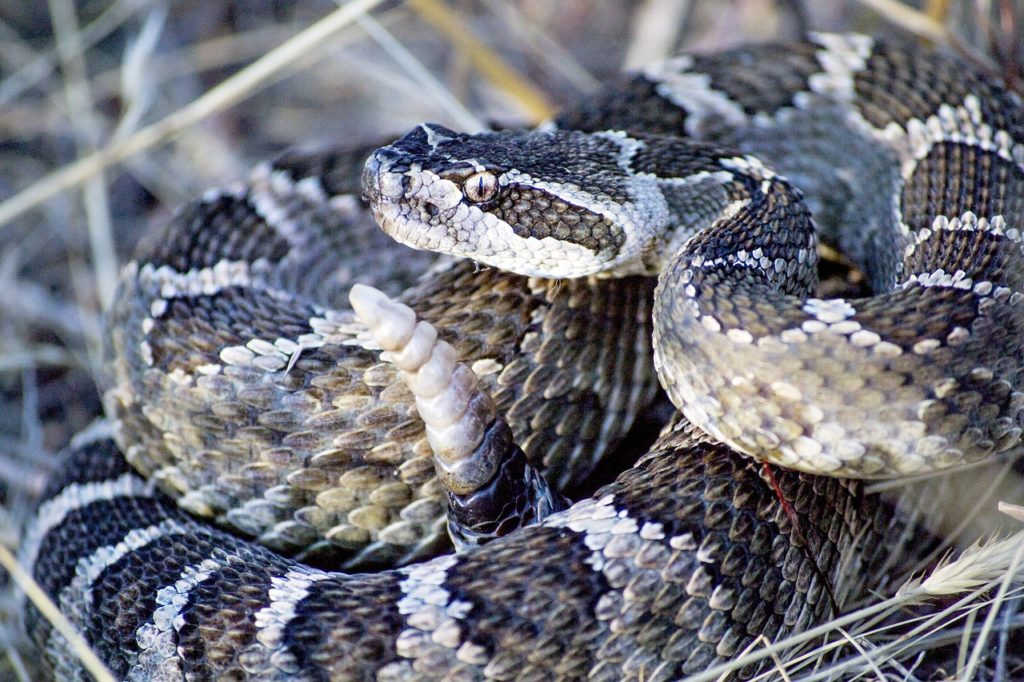
Many animals and plants possess seemingly well-designed attack and defense structures. This has always been difficult for creationists to explain. After all, if animals were originally designed to eat plants (Genesis 1:30), why does the T. rex have banana-sized teeth for pulverizing prey? Why are mosquitoes, leeches, and vampire bats designed to bite and extract blood? Why do rattlesnakes have a venomous bite for attack and defense, and a rattle to ward off their predators?
Baraminology shows us that many lifeforms have undergone significant changes since they were initially created. After the Fall of Man and subsequent Curse on Creation, it is implied in Scripture that biological changes took place among plants and animals (Genesis 3:14-19). Genesis 6:11 describes that both man and beast became increasingly more violent in the years leading up to the Flood. Varieties that arose from some created kinds became vicious predators and developed attack structures accordingly. In response, prey developed ways of defending themselves. Consider the startling noise a rattlesnake makes with the end of its tail when it feels threatened.18 Some organisms coped by developing defense structures in response, like the thorns and thistles many plants have.
Areas of Further Research
Baraminology helps answer many questions and challenges. However, there are still many areas within baraminology that need more work.
What Did the Original Created Kinds Look Like?
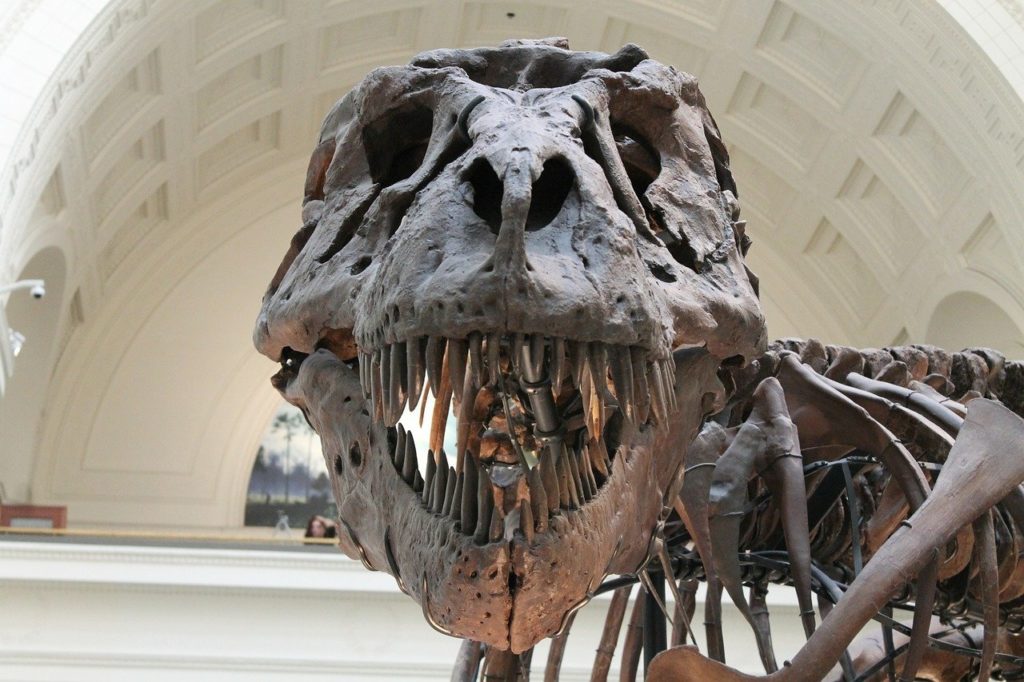
Baraminic research indicates that there can be great variety within a created kind. It is unlikely that the specific kinds God created, or those on the Ark, could ever be known with certainty. Creation biologists, however, can still make educated guesses about what they may have looked like.
For example, they can make a family tree of all known organisms that belong to a single created kind. The “branches” of this family tree show which species are further down the lineage. Those closer to the trunk will represent species most similar to the original ancestor God created.
In the case of tyrannosaurs (T. rex and its relatives), this may have been an animal with longer, grasping arms and a much smaller skull in proportion to its body.19 This ancestral tyrannosaur may have resembled Eotyrannus, a smaller cousin of T. rex, though one designed to eat plants. In the years following the Curse, T. rex’s ancestors seem to have sacrificed longer arms for a more powerful, bone-crushing bite.
Once more species are assigned to specific created kinds, it will become easier to predict the appearance of organisms on the Ark and those God supernaturally created with more accuracy.
Rapid Diversification
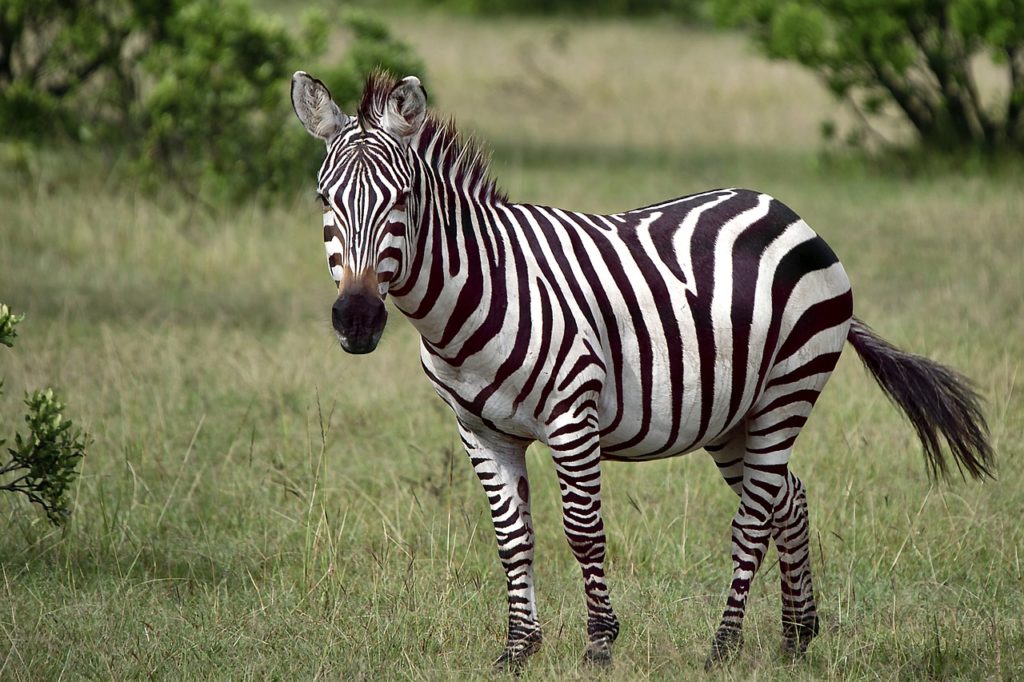
As we have seen, created kinds have undergone much diversification since Creation Week, and since the Flood. And there are several lines of evidence that these sorts of changes within created kinds were not only drastic, but also happened relatively quickly.20 Certainly much more quickly than traditional evolutionary mechanisms like natural selection, mutations, or even the theory of evolution can account for. Let’s consider evidence for rapid diversification, especially after the Flood, from Scripture, modern species, and the fossil record.
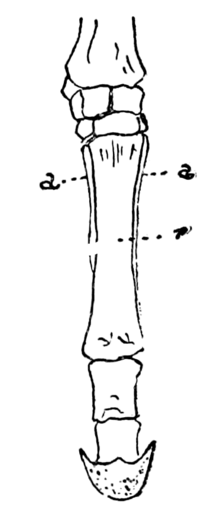
Scripture
Scripture tells us that members of the horse and camel kinds (i.e. Genesis 12:16: donkeys and dromedary camels), the cat kind (i.e. Job 38:39: lions), and the dog kind (i.e. Genesis 49.27: wolves) were all in existence by the time of Abraham. This is significant. Since Bible scholars and archaeologists date Abraham’s life to the Bronze Age, most modern species had developed within perhaps a few hundred to a thousand years after the Flood.
Modern Species
Many animals still possess “genetic memories” of their original ancestors. Modern horses have tiny, unused toe bones above their hooves. They are sometimes even born with three, fully-formed toes on each foot. These are callbacks from early post-Flood horses. If horses lost their toes tens of millions of years ago, the genetic information to generate these toes―according to evolutionary theory―should have become too degraded from disuse to keep recurring.21
Fossil Record
Fossils of extinct species help demonstrate how a kind diversified into new species of that same kind after the Flood. Usually, these diverse species appear abruptly with very few examples of intermediate species22; they do not gradually change from one species into another. This indicates that post-Flood diversification of kinds produced a lineage of organisms in a step-by-step fashion, not slowly and gradually over long spans of time. It is likely that new species or genera were generated in single generations. One organism would give birth to an entirely new species or genera.23
We see an increase in size among fossil horses, camels, elephants, and other mammal families. This appears to be a response to the decline of forests and the expanse of more open habitat. In fossil rabbits and hoofed mammals, we see changes in tooth height. This appears to counteract the ingestion of grit and soil while grazing in open, gritty, feeding environments.24, 25 This form of parallel diversification is very difficult to explain from a naturalistic evolution perspective.
So Many Species in So Little Time
How could the Ark kinds generate so much diversity in such a short amount of time? Creation biologists think that there are genetic mechanisms that we have not yet discovered today. However, they all agree that it was based on variability built into the genes of the original created kinds.26,27,28 The preprogrammed diversity of kinds points to the foresight of the intelligent Designer who made them.
Conclusion
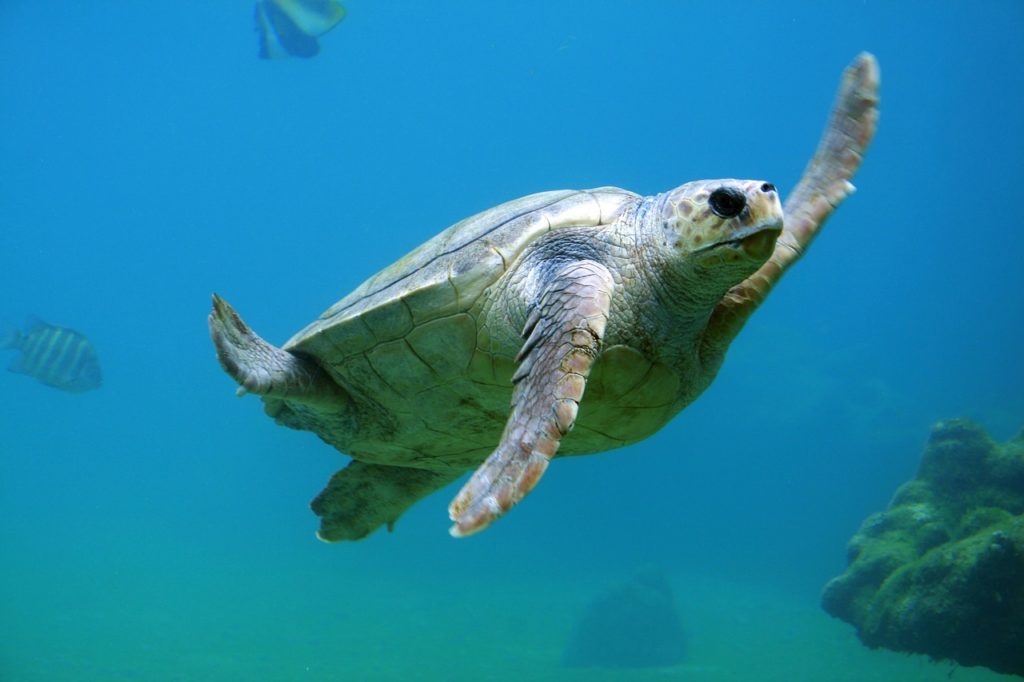
Baraminology―the study of created kinds―is a very active and exciting field. As we continue to improve our baraminic methods and do more research, we inch closer and closer to a better understanding of the diversity with which God filled His world―both supernaturally during Creation Week and naturally through diversification. All around us, we see evidence of God’s instruction for living things to fill the earth. With the help of baraminology, we are beginning to see how God’s design functions and has come to fruition.
Where Can I Learn More About Baraminology?
How Many Kinds of Mammals were on the Ark?
How Many Created Kinds of Dinosaurs Were There?
Bombardier Beetles and Baraminology
What is the eKINDS Project?
Footnotes
- “Catalogue of Life: 2018 Annual Checklist”. 2018. Retrieved 07-09-2021 ↩︎
- Landgren P. 1993. “On the origin of ‘species:’ ideological roots of the species concept.” In: Scherer S, editor. Typen des Lebens. Berlin: Pascal Verlag. ↩︎
- Mayr, “Growth of biological thought.” p256; original was Ray, History of Plants. 1686, trans E. Silk. ↩︎
- Mayr, Ernst (1942). “Systematics and the origin of species from the viewpoint of a zoologist.” New York: Columbia University Press. ↩︎
- Strong’s Hebrew: 4327. מִין (min) — 31 Occurrences. (n.d.). ↩︎
- Wieland, Carl. “Variation, Information and the Created Kind.” Journal of Creation 5(1):42–47, April 1991 5, no. 1 (April 1991): 42–47. ↩︎
- Schafer, A.R.D. 2003. The “Kinds” of Genesis 1: What Is the Meaning of Min? Journal of the Adventist Theological Society. Available at: http://works.bepress.com/rahel_schafer/8/ ↩︎
- Wise, K. P. 2018. Devotional Biology: Learning to Worship the Creator of Organisms. Compass Classroom, LCC, pg. 86-87 ↩︎
- Ostrander, Elaine A.; Wang, Guo-Dong; Larson, Greger; Vonholdt, Bridgett M.; Davis, Brian W.; Jagannathan, Vidyha; Hitte, Christophe; Wayne, Robert K.; Zhang, Ya-Ping (2019). “Dog10K: An international sequencing effort to advance studies of canine domestication, phenotypes, and health”. National Science Review. 6 (#4): 810–824. ↩︎
- Pendragon, B., A review of selected features of the family Canidae with reference to its fundamental taxonomic status, Journal of Creation 25(3):79–88, 2011. ↩︎
- Pendragon B. and Winkler, N., The family of cats—delineation of the feline basic type, Journal of Creation 25(2):118–124, 2011. ↩︎
- Brophy, T., R. “Results of BDISTMDS and BARCLAY are Generally Similar and Confirm Baraminological Conclusions for the Landfowl (Aves: Galliformes).” Journal of Creation Theology and Science Series B: Life Sciences 11:1-7. ↩︎
- Hennigan, T. 2014. “An initial estimate toward identifying and numbering the Ark turtle and crocodile kinds.” Answers Research Journal 7:1–10. ↩︎
- ReMine, Walter J. (1990) “Discontinuity Systematics: A New Methodology of Biosystematics Relevant to the Creation Model,” Proceedings of the International Conference on Creationism: Vol. 2 , Article 53. ↩︎
- Wise, Kurt P. (1990) “Baraminology: A Young-Earth Creation Biosystematic Method,” Proceedings of the International Conference on Creationism: Vol. 2 , Article 63. ↩︎
- Wood, Todd. “Baraminology by Cluster Analysis: A Response to Reeves.” Answers Research Journal 14 (2021): 283–302. ↩︎
- Ross, M.R., 2012. “No Kind Left Behind.” Answers Magazine, vol. 8, no. 1, p. 26-29. ↩︎
- Arment, C. Rattlesnakes: A Post-Flood Diversification in the New World. Zoo Creation. Retrieved October 12, 2021. ↩︎
- Aaron, M. 2014. “Discerning tyrants from usurpers: A statistical baraminological analysis of Tyrannosauroidea yielding the first dinosaur holobaramin.” Answers Research Journal 7:459–477. ↩︎
- Wise, K. P. (2018). Perspectives on Speciation. In Devotional Biology: Learning to Worship the Creator of Organisms (pp. 352-353). Nashville, Tennessee: Compass Classroom. ↩︎
- Wise, 2018, 352-353. (Footnote 20) ↩︎
- Please note the differentiation between intermediate species and intermediate form (“missing links”). While intermediate forms between major groups of animals have been found (we address these elsewhere), intermediate species and genera are quite rare. This observation formed the basis for what Drs. Stephen J. Gould and Niles Eldgridge have called ‘punctuated equilibrium.’ ↩︎
- Wise, K. P. [Gateway Creation Conference]. (2021, April 30). Created Kinds [Video]. YouTube. ↩︎
- Jardine, Phillip & Janis, Christine & Sahney, Sarda & Benton, Michael. (2012). Grit not grass: Concordant patterns of early origin of Hypsodonty in Great Plains ungulates and Glires. Palaeogeography, Palaeoclimatology, Palaeoecology. s 365–366. 1–10. 10.1016/j.palaeo.2012.09.001. ↩︎
- Wise, K. P. (2018). Perspectives on Macroevolution. In Devotional Biology: Learning to Worship the Creator of Organisms (pp. 353-358). Nashville, Tennessee: Compass Classroom. ↩︎
- Wood, T.C. 2003b. Perspectives on AGEing: a young-earth creation diversification model. pp.479-489 in: Ivey, R.L., Jr. (editor). Proceedings of the Fifth International Conference on Creationism. Creation Science Fellowship, Pittsburgh, Pennsylvania. ↩︎
- Jeanson, N. T. 2017. Replacing Darwin: The New Origin of Species. Green Forest, Arkansas: Master Books. ↩︎
- Carter, R. 2021. Species were designed to change, part 3: the tangled web of (intrabaraminic) life. Creation Ministries International. ↩︎







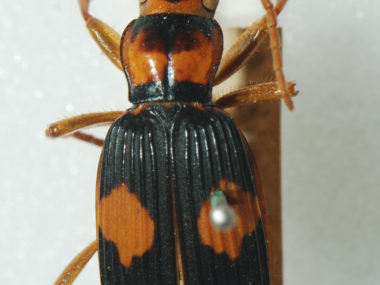



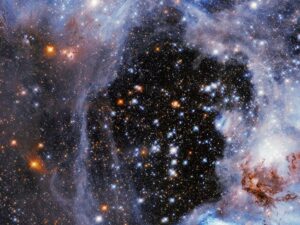
This is a very helpful overview of baraminology and will be my new go-to article to share for those that ask about this topic. Thanks for pulling this together.
Much appreciated! Thank you, Dr. Duff!
Excellent article that nails what its all about. Really good. Yes kinds should be the target for creationists. Yes they were few on creation week and since exploded into glorious diversity, then the flood year rebooted them back , then a post flood explosion of diversity. this leads to errors about why biology is so different before/after the flood.
I like the panda picture. this creature was once said to ba creature but now uts said to be just a bear and the other panda just a raccon or something. Yet both have thyumbs for bamboo, colouring, and other like details and live in the same area. Yet both might be of different kinds but no more panda.
Does baraminology use “orphan genes” to help distinguish “kinds” of creatures?
Hello John! Orphan genes typically pertain to individual species. Seeing as created kinds usually contain more than one species, orphan genes are not currently used by baraminologists, as far as we know.
I already have the Genesis series which I love. I watch them at various times because there is so much information in them. But the question “Is Genesis history?” Absolutely YES, without a doubt! Thank you for making this series.
Thank you for this great article. As I was reading, I was hoping you would touch on “rapid speciation” which you did in the form of rapid diversification. A good example here is the number of canine species has exploded since the 1600s … in this case due to animal husbandry.
Thank you, Mike! I’m glad you found this informative!
Thank you for this informative article.
You’re welcome! I’m glad you enjoyed the article! 🙂
Very well written Christian. You’re a gifted (God given) writer! May the Lord use you for His glory and blessing of many. May the Lord keep you close to Himself, because that’s the personal path to go.
Thank you for these heartwarming remarks!
One issue would be that the original population of cats, for example, wouldn’t be of clones. It could have been a very diverse with a very high heterozygosity. The same goes for all of the original archetype populations.
Christian,
I have read some of your articles and find them very informative. I am compiling an on-line creation science book for use by Christian home-schoolers at the high school level and would like to include this article in whole or part. It describes how vital the biblical use of “kind” is in biology today. I will send you a draft to critique.
Blessings
Thank you, Craig! I’m glad you’ve found this article helpful. 🙂
I’m just starting to read this article, but thought I would comment as I went along -“….portrayals of the Garden might depict Adam and Eve alongside your typical farm chickens, turkeys, cattle, and dog breeds, instead of their wild ancestors which we domesticated. ” Isn’t the idea of humans having to have had to domesticate animals really a secular notion? Yes, after the Flood some animals became”wild” but wouldn’t many have left the ark in their original domesticated state? Hasn’t there been “farm yard” animals since creation?